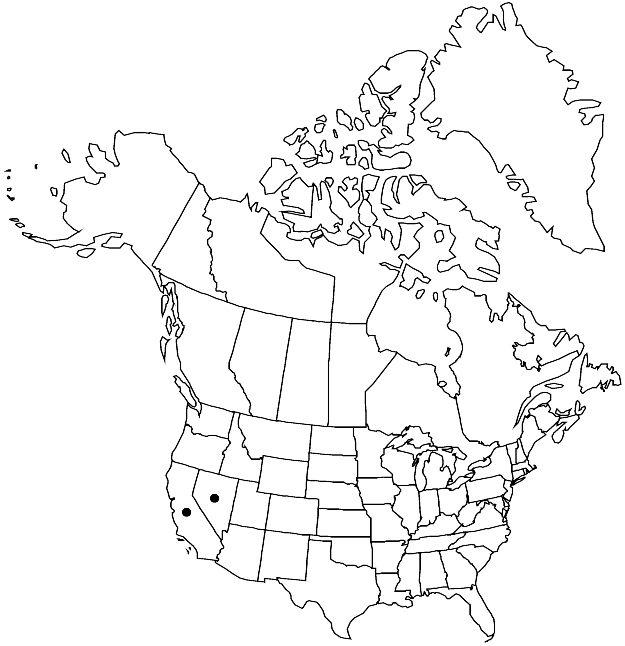Gemmabryum badium
Phytologia 91: 497. 2009.
Plants large. Stems 0.1–2(–3) cm. Leaves strongly concave, 0.5–2(–3) mm; margins plane to strongly revolute, limbidium distinct to weak, of 1 or 2 rows of elongate incrassate cells; apex not hyaline with age; costa long-excurrent, awn brown, yellow-brown, or sometimes hyaline, denticulate, more than 1/2 leaf length, often as long as leaf; proximal laminal cells abruptly quadrate to short-rectangular, 1–2:1 away from costa, 2–4:1 along costa; medial and distal cells long-hexagonal, 12–18(–22) µm wide, (3–)4–5:1. Specialized asexual reproduction by deciduous brood branchlets in distal leaf axils, rhizoidal tubers absent. [Capsule with endostome segments bright to pale yellow. Spores 14–18 µm].
Habitat: Dry soil, rock, semiarid climates
Elevation: moderate to high elevations (1000-2000 m)
Distribution

Calif., Nev., w Eurasia (including Middle East).
Discussion
Gemmabryum badium is similar to G. caespiticium but distinguished by much longer awns, more strongly concave leaves, and absence of rhizoidal tubers. Gemmabryum badium has only recently been recognized from collections in California and Nevada, and is likely to be found elsewhere in North America.
Selected References
None.